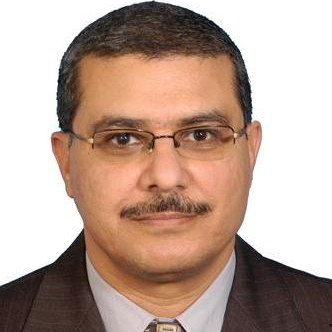International Journal of Intelligent Systems and Applications (IJISA)
IJISA Vol. 6, No. 7, 8 Jun. 2014
Cover page and Table of Contents: PDF (size: 619KB)
An Expert GIS-Based ANP-OWA Decision Making Framework for Tourism Development Site Selection
Full Text (PDF, 619KB), PP.1-11
Views: 0 Downloads: 0
Author(s)
Index Terms
Tourism Development Site Selection, GIS, Expert Systems, ANP-OWA, COM
Abstract
The selection of a tourism development site involves a complex array of decision criteria that may have interdependence relationships within and between them. In the process of finding the optimum location that meet desired conditions, the analyst is challenged by the tedious manipulation of spatial data and the management of multiple decision-making criteria. This paper presents a novel decision making framework in which expert systems (ES), and geographic information systems–based multicriteria evaluation techniques (Analytical Network Process and fuzzy quantifiers-guided ordered weighted averaging operators (GIS-based ANP-OWA)) are integrated systematically to facilitate the selection of suitable sites for building new tourism facilities. First, ES is used for recommending the proper site selection criteria and their interdependence relationships. Then, the GIS-based ANP-OWA is used to perform the spatial data analysis necessary to generate a wide range of possible candidate sites’ scenarios taking into accounts both the interdependence relationships between sitting criteria and the level of risk the decision-makers wish to assume in their multicriteria evaluation. A typical case study is presented to demonstrate the application of the proposed decision making framework.
Cite This Paper
Khalid A. Eldrandaly, Mohammed A. AL-Amari, "An Expert GIS-Based ANP-OWA Decision Making Framework for Tourism Development Site Selection", International Journal of Intelligent Systems and Applications(IJISA), vol.6, no.7, pp.1-11, 2014. DOI:10.5815/ijisa.2014.07.01
Reference
[1]O. A. Shcherbina, and E. A. Shembeleva, “Modeling Tourism Sustainable Development,” in Innovations in Computing Sciences and Software Engineering, T. Sobh, and K. Elleithy eds., Netherlands: Springer, 2010, pp. 551-556.
[2]T. Chou, C. Hsu, and M. Chen, “A fuzzy multi-criteria decision model for international tourist hotels location selection,” International Journal of Hospitality Management, vol. 27, pp. 293–301, 2008.
[3]K. Eldrandaly, Spatial Decision Making: An Intelligent GIS-Based Decision Analysis Approach, Germany: VDM Verlag, 2010.
[4]C. Jun, Incorporating decision preferences into an expert geographic information system for industrial site selection, PhD Dissertation, Texas A&M University, College Station, USA, 1997.
[5]R. Feick, and B. Hall, “The Application of a Spatial Decision Support to Tourism-Based Land Management in Small Island States,” Journal of Travel Research, vol. 39, pp. 163-171, 2000. DOI:10.1177/004728750003900206.
[6]K. Eldrandaly, N. Eldin, and D. Sui, “A COM-based Spatial Decision Support System for Industrial Site Selection,” JGIDA, vol. 7(2), pp. 72-92, 2003.
[7]N. Eldin, and K. Eldrandaly, “A Computer-Aided Decision-Making System for Siting Capital Investment Projects,” ASCAAD's first International Conference on Computer Aided Architectural Design, Saudi Arabia: KFUPM, 2005.
[8]M. H. Vahidnia, A. A. Alesheikh, and A. Alimohammadi, “Hospital site selection using fuzzy AHP and its derivatives,” Journal of Environmental Management, vol. 90 (10), pp. 3048–3056, 2009.
[9]K. A. Eldrandaly, and N. M. AbdelAziz, “Enhancing ArcGIS Decision Making Capabilities Using an Intelligent Multicriteria Decision Analysis Toolbox,” Journal of Environmental Informatics, vol. 20 (1), pp. 44-57, 2012.
[10]M. Rahman, B. Rusteberg, R. Gogu, J. Ferreira, and M. Sauter, “A New Spatial Multicriteria Decision Support Tool for Site Selection for Implementation of Managed Aquifer Recharge,” Journal of Environmental Management, vol. 99, pp. 61-75, 2012.
[11]K. Eldrandaly, “Developing a GIS-Based MCE Site Selection Tool in ArcGIS Using COM Technology,” IAJIT vol. 10(3), 2013.
[12]C. Chen, “Applying the Analytical Hierarchy Process (AHP) Approach to Convention Site Selection,” Journal of Travel Research, vol. 45, pp. 167-174, 2006. DOI: 10.1177/0047287506291593.
[13]S. Lee, A Spatial Decision Support System for Guiding the Selection of Tourism Development Sites, PhD Dissertation, Texas A&M University, USA, 2001.
[14]M. Ghamgosar, M. Haghyghy, F. Mehrdoust, and N. Arshad, “Multicriteria Decision Making Based on Analytical Hierarchy Process (AHP) in GIS for Tourism, Middle-East,” Journal of Scientific Research, vol. 10 (4), pp. 501-507, 2011.
[15]M. Abed, M. Monavari, A. Karbasi, P. Farshchi, and Z. Abedi, “Site Selection Using Analytical Hierarchy Process by Geographical Information System for Sustainable Coastal Tourism,” International Conference on Environmental and Agriculture Engineering, vol.15, pp. 120-124, 2011.
[16]T. L. Saaty, Decision Making with Dependence and Feedback: The Analytic Network Process, Pittsburgh: RWS Publications, 1996.
[17]Y. Meng, J. Malczewski, and S. Boroushaki, “A GIS-based multicriteria decision analysis approach for mapping accessibility patterns of housing development sites: a case study in Canmore, Alberta.” Journal of Geographic Information Systems, vol. 3, pp. 50–61, 2011.
[18]K. Eldrandaly, “Exploring multi-criteria decision strategies in GIS with linguistic quantifiers: an extension of the analytical network process using ordered weighted averaging operators,” International Journal of Geographical Information Science, vol. 27(12), pp. 2455-2482, 2013.
[19]B. Davis, GIS: A Visual Approach, OnWord Press, 2001.
[20]M. AL-Amri and K. Eldrandaly, “A Proposed GIS-Based Decision Making Framework for Tourism Development Sites Selection,” The International Arab Conference on Information Technology, 2011.
[21]R. L. Keeney, Siting Energy Facilities. Academic Press, New York, USA, 1980.
[22]E. A. Williams, and A. K. Massa, Siting of Major Facilities: A Practical Approach, New York: McGraw- Hill Inc., 1983.
[23]J. Malczewski, GIS and Multicriteria Decision Analysis, John Wiley and Sons, 1999.
[24]S. Boroushaki, and J. Malczewski, “Implementing an extension of the analytical hierarchy process using ordered weighted averaging operators with fuzzy quantifiers in ArcGIS,” Computers & Geosciences, vol. 34(4), pp. 399-410, 2008.
[25]T. Nyerges, and J. Jankowski, Regional and Urban GIS: A Decision Support Approach. New York: The Guilford Press, 2010.
[26]J. Malczewski, “Ordered weighted averaging with fuzzy quantifiers: GIS-based multicriteria evaluation for land-use suitability analysis,” International Journal of Applied Earth Observations and Geoinformation, vol. 8 (4), pp. 270–277, 2006.
[27]S. P. Abadi, Application of Analytic Network Process and GIS for Evaluating Integrated Coastal Land Use in Kuala Langat District, Selangor, Malaysia. Thesis (PhD). Putra University Malaysia, 2008.
[28]T. Gómez-Navarro, M. García-Melón, D. Díaz-Martín and S. Acuna-Dutra, “Evaluation of urban development proposals An ANP approach,” World Academy of Science, Engineering and Technology, vol. 44, 2008.
[29]S. Drobne, and A. Lisec, “Multi-attribute Decision Analysis in GIS: Weighted Lainear Combination and Order Weighted Averaging,” Informatica, vol. 33, pp. 459-474, 2009.
[30]H. Jiang, and J. R. Eastman, “Application of fuzzy measures in multi-criteria evaluation in GIS,” int. j. geographical information science, vol. 14(2), pp. 173-184, 2000.
[31]J.Malczewski, and C. Rinner, “Exploring multicriteria decision strategies in GIS with linguistic quantifiers: A case study of residential quality evaluation,” J Geograph Syst, vol. 7, pp. 249–268, 2005.
[32]O. Nekhay, M. Arriaza, and L. Boerboom, “Evaluation of soil erosion risk using Analytic Network Process and GIS: A case study from Spanish mountain olive plantations,” Journal of Environmental Management, vol. 90, pp. 3091–3104, 2009.
[33]K. Chen, K. Tsai, and C. Shieh, “Analytic Network Process Method Integrated with GPS/GIS Technology Used to Identify Potential Slope Failures in Central Taiwan,” Proc. of the Nineteenth (2009) International Offshore and Polar Engineering Conference. Osaka: Japan, 2009.
[34]Microsoft, Microsoft Developer Network online documentation, MSDN Library, 2005.
[35]Rulemachines, Visual Rule Studio Developer’s Guide, Canada: OnDemandManuals, 2002.
[36]A. H. Zaied, S. I. AbdelAal, M. M. Hassan, “Rule-based Expert Systems for Selecting Information Systems Development Methodologies,” I.J. Intelligent Systems and Applications, vol. 5(9), pp. 19-26, 2013.
[37]ESRI, What is ArcGIS? Redlands: ESRI Press, 2001.
[38]ESRI, ArcGIS 9: The complete Geographic Information System, Redlands: ESRI Press, 2006.
[39]ESRI, ArcGIS® Desktop Developer Guide, Redlands: ESRI Press, 2004.
[40]M. Mollaghasemi, and J. Pet-Edwards, Making Multi-Objective Decisions. California: IEEE Computer Society Press, 1997.
[41]T. L. Saaty, “Decision Making- The Analytic Hierarchy and Network Processes (AHP/ANP),” Journal of Systems Science and Systems Engineering, vol. 13(1), pp. 1-35, 2004.
[42]I. Yuksel, and M. Dagdeviren, “Using the analytic network process (ANP) in a SWOT analysis – A case study for a textile firm,” Information Sciences, vol. 177, pp. 3364–3382, 2007.
[43]L. A. Zadeh, “A computational approach to fuzzy quantifiers in natural languages,” Computers & Mathematics with Applications, vol. 9, pp. 149–184, 1983.
[44]J. M. David, K. Balakrishnan, “Performance Improvement of Fuzzy and Neuro Fuzzy Systems: Prediction of Learning Disabilities in School-age Children,” I.J. Intelligent Systems and Applications, vol. 5(12), pp. 34-52, 2013.
[45]R. Yager, “Quantifier guided aggregation using OWA operators,” International Journal of Intelligent Systems, vol. 11, pp. 49–73, 1996.

